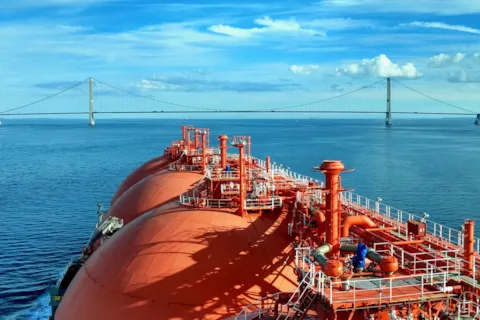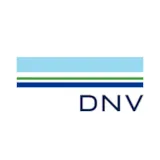Get regular gas carrier insights!
Don’t be left out. Join the many others and sign up today to receive the latest insights.
Sign up
Under the Energy Efficiency Existing Ship Index (EEXI) regime, LNG carriers will be assigned a reference line of their own because of certain properties that would otherwise put them at a severe disadvantage. DNV expert Jan Wienke provides some background information.

Jan Wienke, a principal engineer at DNV, performs measurements during sea trials of newbuilds and has attended more than 200 sea trials worldwide over the past 19 years. He was a member of the ISO expert group on speed trial performance and evaluation. Within the scope of his approval, surveying and surveyor training work, he is also involved in EEDI verification. He is currently mainly focusing on the EEXI scheme.
What prompted the development of a dedicated EEXI reference line for LNG carriers, and does it apply to all LNG carriers?

Reference lines have been defined for all major ship types. They all use the world fleet status in the year 2008 as a reference. LNG carriers were originally grouped together with the gas-carrier ship type and assigned a correction factor, a so-called cubic correction, to account for the low density of LNG. For EEDI Phase 1, which applies to ships with a contract date after 1 January 2015, a separate ship type was defined for LNG carriers to give proper consideration to the different propulsion systems found in these vessels and the additional power requirement of reliquefaction equipment on some ships. This ship type definition now applies to the LNG carrier fleet in service under the EEXI regime, as well.

What is the reason behind the special treatment of non-conventional propulsion systems, in particular gas and steam turbines, within the EEXI requirements for LNG carriers?

About one third of the existing fleet of LNG carriers (around 600 vessels in total) have direct diesel engine propulsion; another third are powered by steam turbines, and the rest have diesel-electric systems. The original approach addressed gas carriers with conventional propulsion systems only and would therefore have applied to only one third of the total fleet. Steam turbines make generous use of boil-off gas, which would leave them at a severe disadvantage if treated like other propulsion systems.

What makes it so difficult to define adequate EEXI requirements for vessels with non-conventional propulsion?

The most challenging group are ships with steam turbines because of their very high specific fuel oil consumption (SFOC); at the same time, the standard improvement measure, engine power limitation (EPL), is not feasible for steam turbines because low-power operation would actually further increase their SFOC. Steam turbines are no longer installed in new ships. The existing vessels equipped with this propulsion type were designed to run on the cargo boil-off gas while minimizing cargo loss due to boil-off.

What should be done to properly account for these propulsion systems in EEXI calculations?

The boil-off gas has to be physically dealt with somehow on board, either by using it as fuel or by reliquefying it, which costs extra energy. Whichever approach was chosen when a particular vessel was built, there needs to be a way to account for it in the equation to treat that ship type fairly.

What measures can be taken to fulfil the EEXI requirements?

Each of the three different propulsion types needs to be considered separately: 1.Diesel engines can be converted to or replaced by dual-fuel engines, or an EPL device can be installed. 2.Diesel-electric systems usually have dual-fuel engines which can use the boil-off gas and should not require any additional measures. EPL can be applied to these where appropriate. 3.Steam turbine ships have no feasible alternative to the use of boil-off gas for propulsion because this is how they are designed. The boil-off gas has to be accounted for in the EEXI calculation.

Don’t be left out. Join the many others and sign up today to receive the latest insights.
Sign up